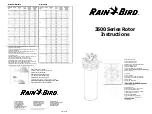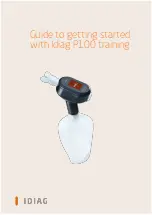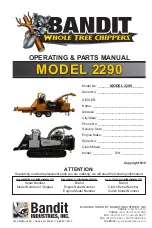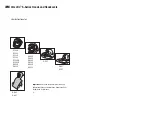
ROOFERS KIT
USER MANUAL
www.bsafe.com.au
1300 783 606
I
15
Steps for Entry and Exit of a Roof (cont.)
2. Ensure base of ladder is on stable, level ground at a ratio of 1m wide to 4m high.
3.
If possible secure base of ladder.
4.
Fit safety harness before ascending the ladder; do not attach yourself to the ladder unless the ladder has been
secured top and bottom.
Note: Only when the ladder has been properly secured can a worker safely attach to the ladder with a restraint line
no longer than 600mm and it should be attached to the front loops of the harness restraint point.
5.
A temporary ladder can only be used as a work platform if all the above conditions are met.
6.
Before stepping from the ladder onto the roof structure, ensure you have securely connected your restraint line or
shock absorbing lanyard to the first roof anchor point.
7.
When leaving the roof structure ensure both feet are securely on the ladder before disconnecting from the roof
anchor point.
When working at heights with foot clearance less than 4.15 metres fall clearances are very important as a 2m shock
absorbing lanyard requires foot clearance of 4.15metres (refer to diagram on fall clearances). If your fall clearance is less
than this then shorter lanyards are required.
© Copyright Beaver Brands Pty Limited
Issue 7 08/11/2013
2. Ensure base of ladder is on stable, level ground at a ratio of 1m wide to 4m
high.
3
. If possible secure base of ladder.
4. Fit safety harness before ascending the ladder; do not attach yourself to the ladder
unless the ladder has been secured top and bottom.
Note: Only when the ladder has been properly secured can a worker safely
attach to the ladder with a restraint line no longer than 600mm and it should be
attached to the front loops of the harness- restraint point.
5. A temporary ladder
can only
be used as a work platform if all the above conditions
are met.
6. Before stepping from the ladder onto the roof structure, ensure you have securely
connected your restraint line or shock absorbing lanyard to the first roof anchor point.
7. When leaving the roof structure ensure both feet are securely on the ladder before
disconnecting from the roof anchor point.
When working at heights with foot clearance less than 4.15 metres fall
clearances are very important as a 2 metre shock absorbing lanyard requires
foot clearance of 4.15 metres (refer diagram on fall clearances). If your fall
clearance is less than this then shorter lanyards are required.
CUSTOMER:
B-Safe Roofers Kit
Manufactured by Beaver Brands Pty Limited
55 Sarah Andrews Close, Erskine Park, NSW 2759
Phone 1300783606
1 metre
4 metres
B-Safe Roofers Kit
Manufactured for Bunzl Brands & Operations Pty Ltd
55 Sarah Andrews Close, Erskine Park, NSW 2759
National Sales:1300 783 606
beaverbrands.com.au






































